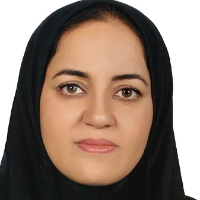Statistical models for non-destructive prediction of common onion (Allium cepa L.) leaf area
The importance of rapid, non-destructive, and accurate estimation of leaf area (LA) in agronomic and physiological studies is well known. The need for such estimates of leaf area in particular for leaves with unusual shapes has led to studies relating leaf dimensions and leaf area. However, a search of literature revealed that little information is available for short day onion (Allium cepa L.). The objective of this study was to develop a statistically validated regression model for leaf area prediction from simple non-destructive measurements for onion cultivated in the South of Iran.
In order to prepare the required plant samples to measure leaf area parameters, an experiment was conducted in the cropping year 2020-2021 in a field of 300 square meters located in Hormozgan province-Rahdad district. The short-day cultivar Takii was used because of its wide planting area in the province. 40 leaves were chosen at random from plants growing in the farm, half were left for validation of the model and the other 20 leaves were subjected to measurement and calibration. The standard method (LICOR LI-3000C) was used for measuring the actual areas of the leaves. Before measuring the leaf area, two main parameters related to leaf length and width were accurately determined for each leaf. To select the best variables and the regression model for estimating leaf area, the fitted simple and multiple linear regression were subjected to the stepwise elimination method. Finally, the accuracy of the selected models was validated using the root mean square error (RMSE) and coefficient of determination (R2).
All linear models for estimation of leaf area with width (W) and length (L) as well as models including both variables were subjected to regression analysis. The results indicated that leaf length (L) is more appropriate variable for estimating onion leaf area and leaf width (W) was not able to properly describe leaf area. Based on the findings of this research leaf area estimation model with both W and L had the best prediction, with RMSE% = 8.64, RMSE= 1.76 and R2= 0.91. (Area= 0.121 + 0.01537 L2 + 0.3225 L×W).
As the understanding of plant growth and development has been increasing, such mathematical models will be very useful tools for the prediction of leaf area for many plants without the use of expensive devices. Thus, the models from the present study will enable researchers of plant growth modeling to predict leaf area non-destructively with the equations developed.Keywords: Leaf Area, Leaf Length, Leaf Width, Regression, Coefficient of determination.
-
Evaluation of Ecological Resilience of Agricultural Ecosystems in Razavi Khorasan Province: Comparison of Integrated and Non-Integrated Ecosystems
Pegah Naghipour, , Mahdi Nasiri Mahalati *, Soroor Khorramdel
Agroecology journal, -
Evaluation of Agrobiodiversity in Afghanistan Species and genetic diversity of field crops
M.Y. Jami, *, Mahdi Nassiri Mahallati, Soroor Khorramdel, R. Nazarian
Journal of Agricultural Science and Sustainable Production, -
The Effect of Edible Coating with Alginate and Shirazi Thyme Essential Oil on the Qualitative Characteristics of Ber Fruit (Ziziphus mauritiana Lam.) during Storage
Aliehsadat Rafaathaghighi, *, Abdolmajid Mirzaalian Dastjerdi, Farzin Abdollahi
Iranian Food Science and Technology Research Journal, -
Evaluation the Effects of Irrigation Periods and Chitosan as a Biological Elicitor on Onion (Allium cepa L.) Growth and Yield
Y .Rameshjan, A .Asgari *, F .Abdollahi
Iranian Journal of Field Crops Research, -
Effect of fertilizer and seed inoculation with Pantoea agglomerans on pigments, vegetative, qualitative, and quantitative characteristics of lettuce (Lactuca sativa)
Saeed Ashoori, Farzin Abdollahi *,
Journal of Vegetable Science, -
Effect of Different Intercropping Ratios of Three Bean Ecotypes as Replacement Series on their Physiological Indices
Y. Rameshjan, A. Koocheki *, M. Nassiri Mahallati, S. Khorramdel
Iranian Journal of Field Crops Research,




